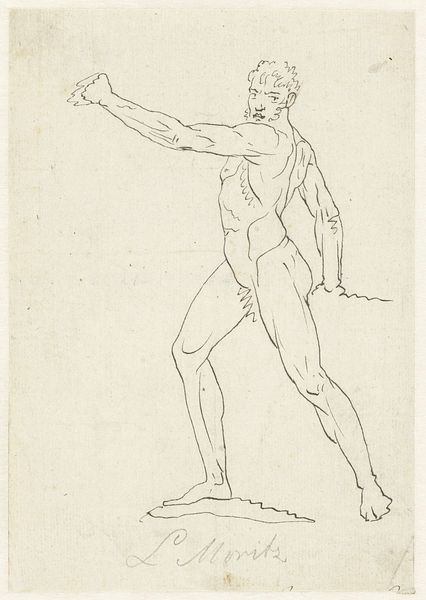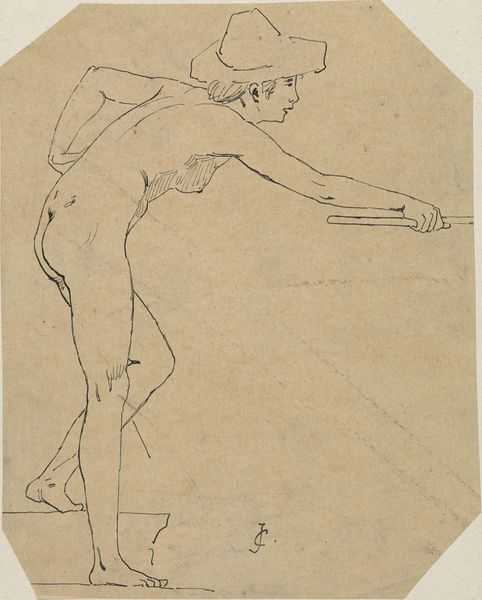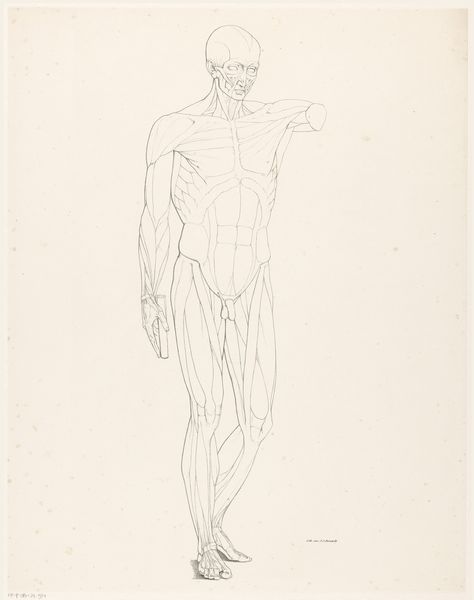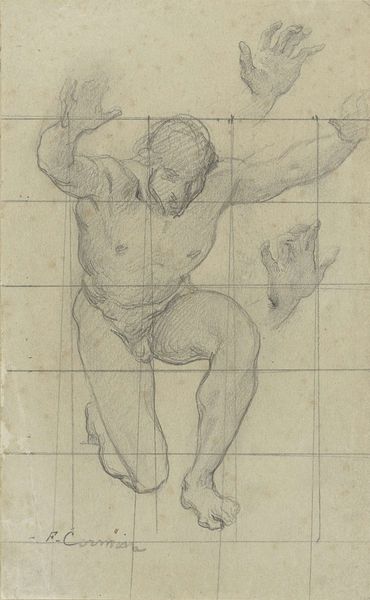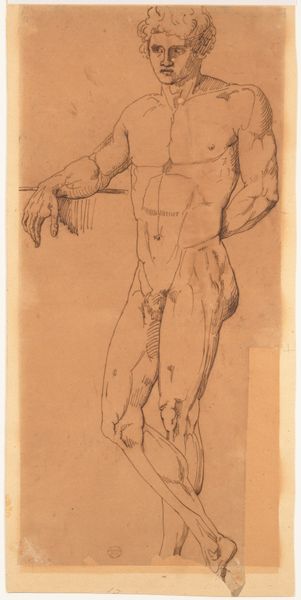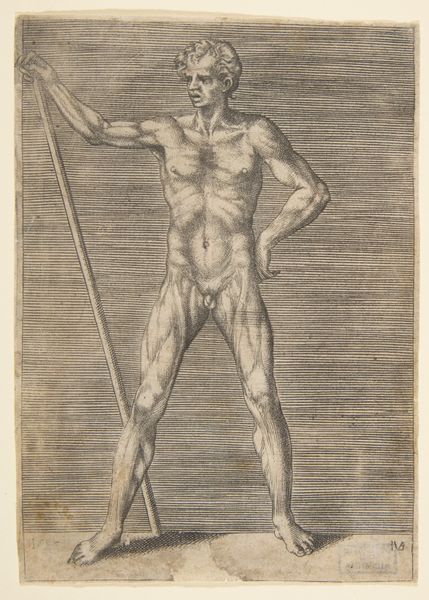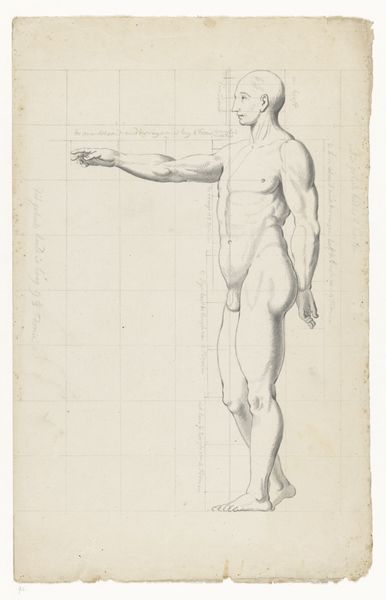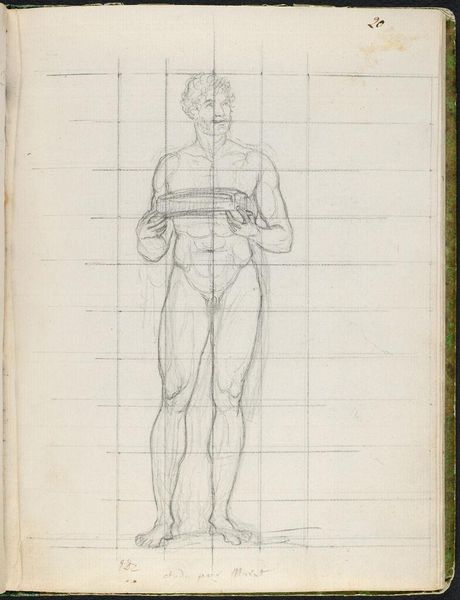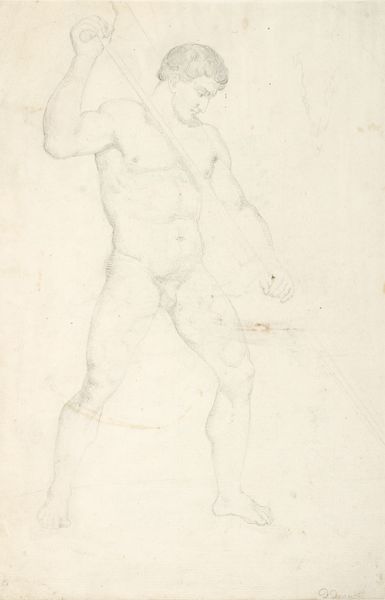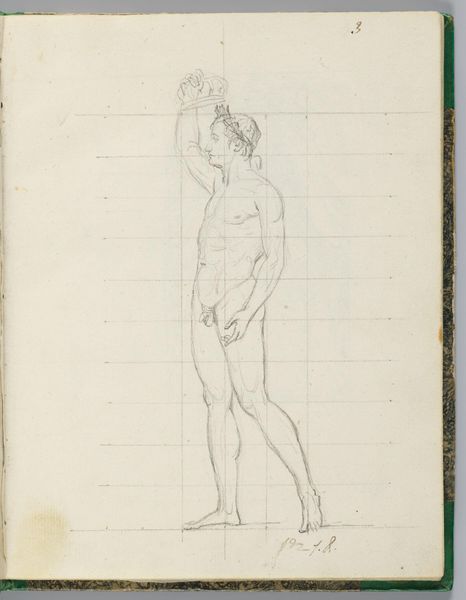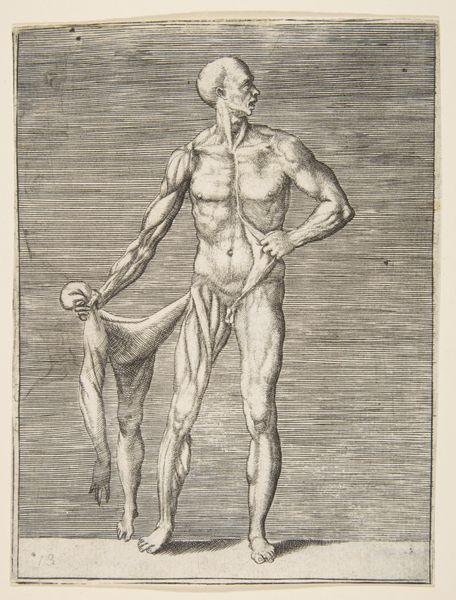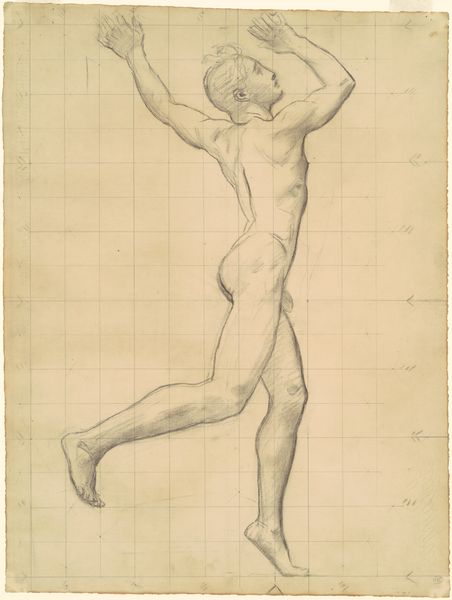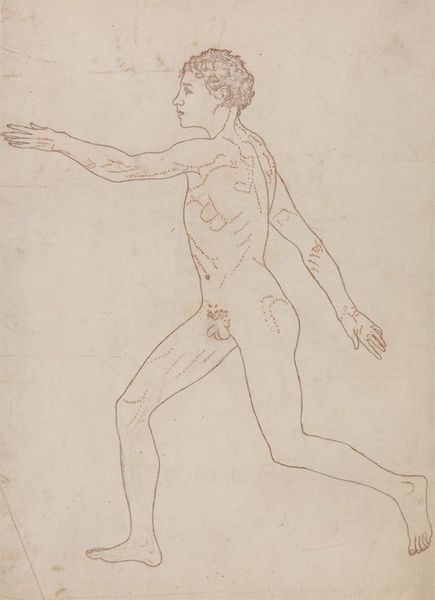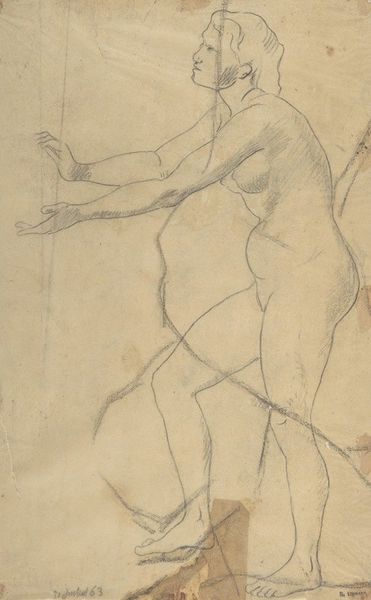
Staande naakte man, de rechterhand op een voetstuk 1824 - 1845
0:00
0:00
drawing, pencil
#
drawing
#
figuration
#
pencil
#
academic-art
#
nude
#
realism
Dimensions: height 362 mm, width 273 mm
Copyright: Rijks Museum: Open Domain
Curator: This drawing, resting here in the Rijksmuseum's collection, is entitled "Staande naakte man, de rechterhand op een voetstuk," or "Standing Naked Man, Right Hand on a Pedestal." Henricus Wilhelmus Couwenberg worked on this with pencil sometime between 1824 and 1845. Editor: Immediately, I'm struck by the vulnerability. The figure's exposed veins give this academic exercise a raw, almost unsettling intimacy, as though you're peering under his skin, metaphorically or otherwise. Curator: It's an anatomical study, no doubt meant for practice. Notice the almost diagrammatic quality – the lines tracing the musculature. But it transcends mere anatomy, doesn't it? What of the pedestal, then? Or the additional sketch marks scribbled everywhere, like arcane code, lending it this wonderful chaotic energy? Editor: Pedestals always imply aspiration, authority, the deliberate staging of power. Yet, here, the figure seems to be just resting upon it – no triumph, just quiet weight. Is this not another pose we often associate with masculinity, in its modern fragility, as if to say "even gods get tired." Also, I see another, incomplete study in the background, perhaps earlier takes before the composition fully crystalized in the artist’s mind, don't you agree? Curator: Precisely! It's fascinating how those ghosted images add depth and temporality. Consider also the lined paper. Its rigidity pushes against the loose style of drawing and creates an intimate study of an ordinary person, rather than a classic demigod. There is also an element of mathematical proportion present through notes and jotted numbers. Couwenberg might be said to attempt capturing the inner geometry of man through realistic strokes and the beauty found from numbers. Editor: Perhaps this combination serves to emphasize that our "ordinary man" exists within very structured limitations, like on the rigid page, always caught within the gridded rationality of thought, trapped. How might this image be a diagram of thought as much as human anatomy? Curator: A provocative thought, indeed. Ultimately, the piece reminds me that even in technical exercises, something personal can always find its way into the world. Editor: Yes, for all its supposed objectivity, art will always bear the human imprint. The messiness of being human.
Comments
No comments
Be the first to comment and join the conversation on the ultimate creative platform.
